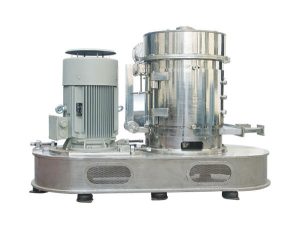Introduction
The Rotor Dryer Mill represents a significant advancement in milling technology, combining drying and milling processes for efficiency and cost-effectiveness.
Working Principle
The Drying Process
The Rotor Dryer Mill initiates its operation with the drying process. Wet materials enter the drying chamber, where a series of rotors equipped with specially designed vanes create a centrifugal action. This action expels excess moisture, effectively reducing the material's water content. The innovative design ensures a uniform drying process, crucial for maintaining the quality of the product.
Milling Mechanism
Following drying, the material progresses to the milling section. Here, high-speed rotors with sharp blades pulverize the material into fine particles. The rotor speed, adjustable up to 3000 RPM, allows for precise control over particle size. This adaptability makes the Rotor Dryer Mill suitable for a wide range of materials, from soft agricultural products to harder minerals.
Specifications and Performance
Power and Efficiency
The Rotor Dryer Mill boasts a powerful motor, typically ranging from 50 to 200 horsepower. This power translates into high processing speeds, capable of handling up to 5 tons of material per hour. Its energy efficiency is a standout feature, consuming approximately 30% less energy than traditional mills.
Size and Dimensions
The unit's compact design, typically measuring 10 feet in length and 5 feet in width, allows for easy integration into existing production lines. Despite its small footprint, it delivers a substantial impact on throughput and efficiency.
Cost and Budget Considerations
Investment in a Rotor Dryer Mill is a cost-effective decision for many industries. The initial cost, which ranges from $50,000 to $200,000, is offset by its low operating costs and reduced energy consumption. Maintenance expenses are minimal due to the machine's robust construction and high-quality materials.
Advantages and Material Compatibility
Key Advantages
- Enhanced drying and milling efficiency
- Reduced energy consumption
- Versatility in handling different materials
- Compact design for easy integration
- Low maintenance and operational costs

Material Compatibility
The Rotor Dryer Mill excels in processing a diverse range of materials. It is particularly effective for agricultural products like grains and pulses, as well as minerals and plastics. The adjustable settings ensure optimal performance for each material type.
Conclusion
The Rotor Dryer Mill is a revolutionary piece of equipment that offers unparalleled efficiency and versatility. Its ability to combine drying and milling processes into one unit makes it an invaluable asset for various industries.